From Abroad: the Gift of Souvenirs
December is here! The month of gifts—and for me, the best ones are souvenirs from abroad, especially those with a story behind them. Travel back to Mongolia, Senegal and Morocco.
After returning from my trip to Japan, I faced a variety of questions. From the generic “So, how was it?” (expecting me to launch into a monologue) and “Is Japan really that great?” to more specific ones about places or experiences like travelling solo. The best question, however, was, “What kind of souvenirs did you bring back?”
Souvenirs are wonderful—even the cliché ones like fridge magnets or keychains—as long as there’s a story behind them. It could be about where you found it or the interaction with the vendor. Gifts from abroad are special too. I remember my dad bringing back a white bear from Scotland with a scarf and hat in tartan. I gave it the very original name, Scottie, and it became my companion throughout childhood.
I love buying souvenirs and gifts for others. Sometimes it’s challenging to find something; other times, it’s easy. Japan was definitely on the easier side!
I have so many great souvenirs. In this post, I’ll highlight just three. I’ve become so enthusiastic about the topic that I’m planning another post dedicated to it!
Camel socks from Mongolia
Mongolia was part of my journey on the Trans-Mongolian Railway from Moscow to Beijing. We spent over two weeks in this immense and stunning country, exploring Ulaanbaatar, Terelj National Park, Kharkhorin, and the Gobi desert.
The Gobi isn’t a desert like the Sahara. It’s more than just a basin of sand. It’s a mix of pebbles, dry grass, rocks, pikas, and surprises like the Khongoryn Els sand dunes, Yolyn Am ice canyon, and the White Mountain (we never learned its real name, as our guide didn’t tell us). At times, there’s simply nothing—but that’s the point. The emptiness, silence, and constant icy wind are its essence.
Among all the souvenirs I bought in Mongolia (even a Genghis Khan wallet), the camel socks stand out as my favourite. Warm, soft, and durable, they’ve been perfect for Dutch winters—I still wear them regularly. We also bought up a pair for our friends in Beijing, and they loved them too.
The family we are staying with is moving between ger camps, shifting from their summer spot to their winter spot. Choosing the location seems rather arbitrary—it’s in the middle of the desert anyway and could just as easily be 100 metres away.
We sleep at their winter spot but join them for meals in their last ger at the summer location. Their camels were there too, including six-month-old calves. They only slaughter one camel a year. At the family’s place, we drink tea with camel milk, and I finally try dried camel meat.


A teapot from Morocco
My first time in Marrakesh was a visit to remember. It was January, and back in the Netherlands, it was the classic grey and watery cold. As soon as we stepped off the plane, we felt the warmer Moroccan temperature. Life was happening outside again.
It seemed as though everyone had gathered at Djemaa el Fna to buy or sell something. The square is a world of its own—busy and bustling, with people, sounds, and scents everywhere. And nothing beats freshly squeezed orange juice straight from its source.
Because everything felt so different and oriental, especially in the medina, we decided to buy a traditional tea set, complete with a platter and glasses. The sellers clearly know it’s a popular souvenir, so they pull out all the stops.
We found an enthusiastic and funny vendor who was eager to sell us his high-quality goods. He showed us a teapot, exclaiming, “It has five stars on the bottom, so it is good!” Then, to prove its sturdiness, he repeatedly clapped the lid onto the pot. “Look, look, very solid!” he shouted.
We were sold by his performance but knew we had to bargain first. Haggling is like a game, and you just have to play along with a smile.
For your itinerary:
Marrakesh is an excellent base for exploring Morocco; you can head towards the Atlas Mountains, the coast, or the north.
Train travel in Morocco is scenic and covers many directions. You can find more information here and purchase tickets directly at ONCF.
There are also plenty of buses, such as those operated by Supratours and CTM.
From Morocco, it’s also possible to travel overland to Europe. Ferries run from Tanger to Spain (it’s only a one-hour trip!). FRS boats depart directly from the city. A free FRS bus takes you from Tarifa to Algeciras, where you can connect to the Renfe train network.
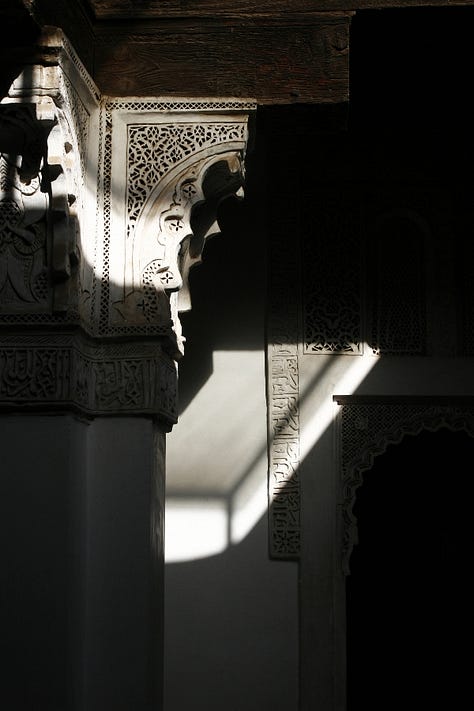


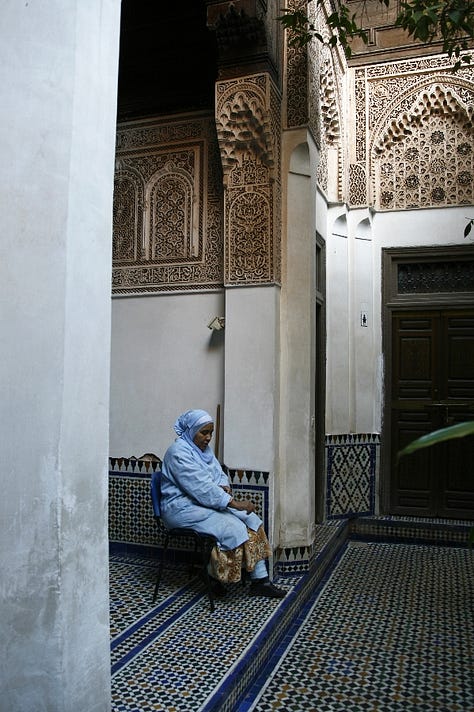
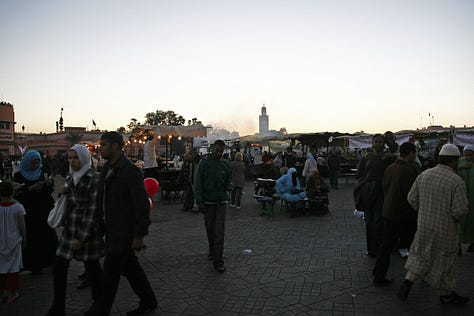
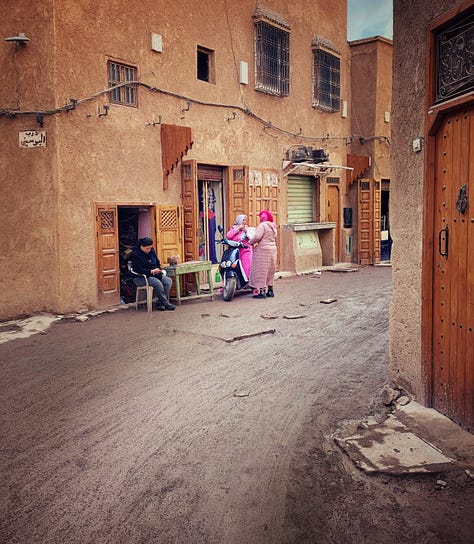
The artwork from Senegal
In almost every country, you can find paintings or prints for sale, but many are rather corny. I often wonder how they end up on a wall somewhere—and which wall, exactly.
While travelling in Senegal, one of our last stops was Saint-Louis in the north. The old centre, located on an island, is full of colonial buildings. Some are beautifully preserved, while others are weathered and peeling, giving the area a unique charm. The streets take on a special glow in the evening light.
In one of the streets, we came across a small art shop selling graphic prints themed around Senegal. A print of Dakar's corniche caught our eye with its warm colours and minimalist design. It now has a prominent place in our living room.
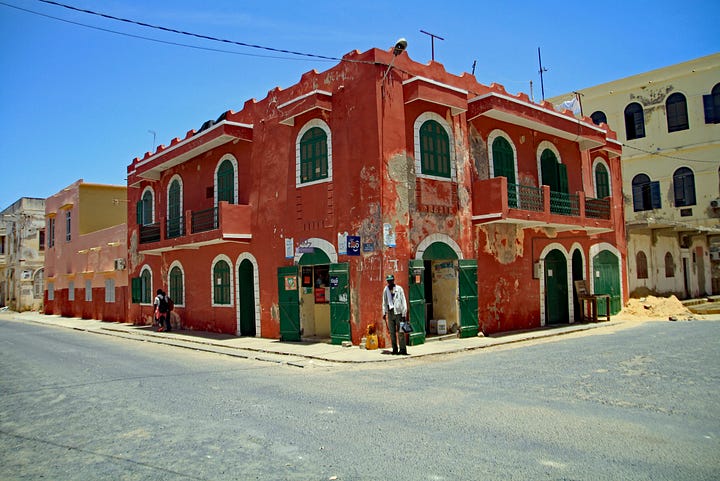
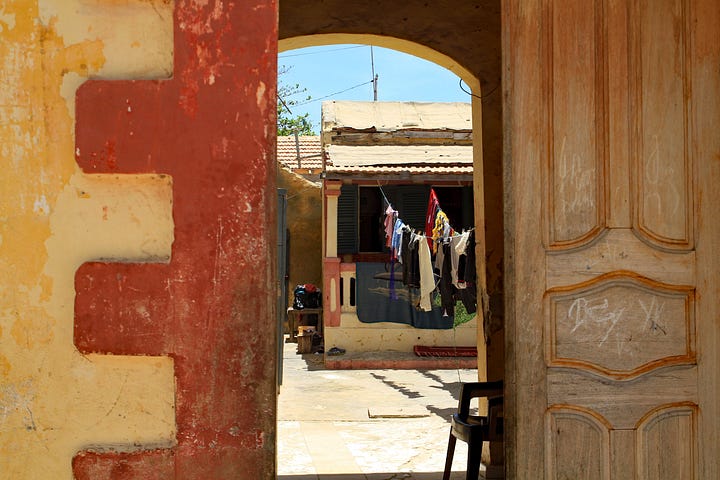
At markets in Senegal, we picked up more quirky items: a bright plastic water pitcher (which confused the seller), gifts made from recycled bottle caps and cans, and other colourful pieces typical of West Africa.
Saint-Louis is a stop on the popular West African overland route for travellers driving from Morocco in polished jeeps or motorhomes.
We travelled with sept-places in Senegal, mostly battered old Peugeots with seven seats (two back seats and one seat in the front). These vehicles depart only when fully loaded, including additional cargo on the roof. At one gare routière, we witnessed a goat casually tied on top of a sept-place before it set off.
How to find great souvenirs & gifts
Don’t buy souvenirs at the airport, even if you want to get rid of leftover currency. It’s better spent on food or drinks, or given to a cleaner you meet.
The best places for original and affordable souvenirs and gifts are: markets (especially those frequented by locals), homeware shops (tableware, cutlery, kitchen utensils), book and stationery shops, and supermarkets (herbs, spice mixes, chopsticks, candy). Flea markets are also great for unique finds!
Don’t focus too much on flashy items. I recently forgot to buy my buddy a gift in Japan (she’s an older lady who enjoys small presents), so I made her a few cranes with origami paper I brought back from the trip. It was a small gesture, but much appreciated. Similarly, I used spice mixes from Morocco, divided them into small jars, and gave them to friends who enjoy cooking.
Sometimes you stumble across something perfect—for yourself or someone else. These spontaneous finds, often make the best souvenirs. Like the camel socks.
Watch, read, listen & for your agenda
Movies make me want to travel even more. Every year, I attend the International Film Festival Rotterdam (IFFR). Next year, it will run from the 30th of January until the 9th of February. It showcases films from all over the world.
A great film from Senegal is Atlantique. From Morocco, I recommend Adam and The Blue Caftan.
Another souvenir I bought in Mongolia is a knucklebone game called Shagai, made from goat or sheep ankle bones.
Saint-Louis hosts a jazz festival annually, and Dakar has the Dak’Art Biennale. The 2025 dates are not yet known.
I like this article in the New York Times about collecting small keepsakes to help keep the places you love alive.
Did you also end up buying a teapot in Morocco? Find the recipe for traditional mint tea on this website.
Mongolia is famous for throat singing—check out this playlist.
What about your souvenirs?
I’d love to hear from you! What are your precious souvenirs? What kinds of gifts have you bought on your travels?
Let me know in the comments!




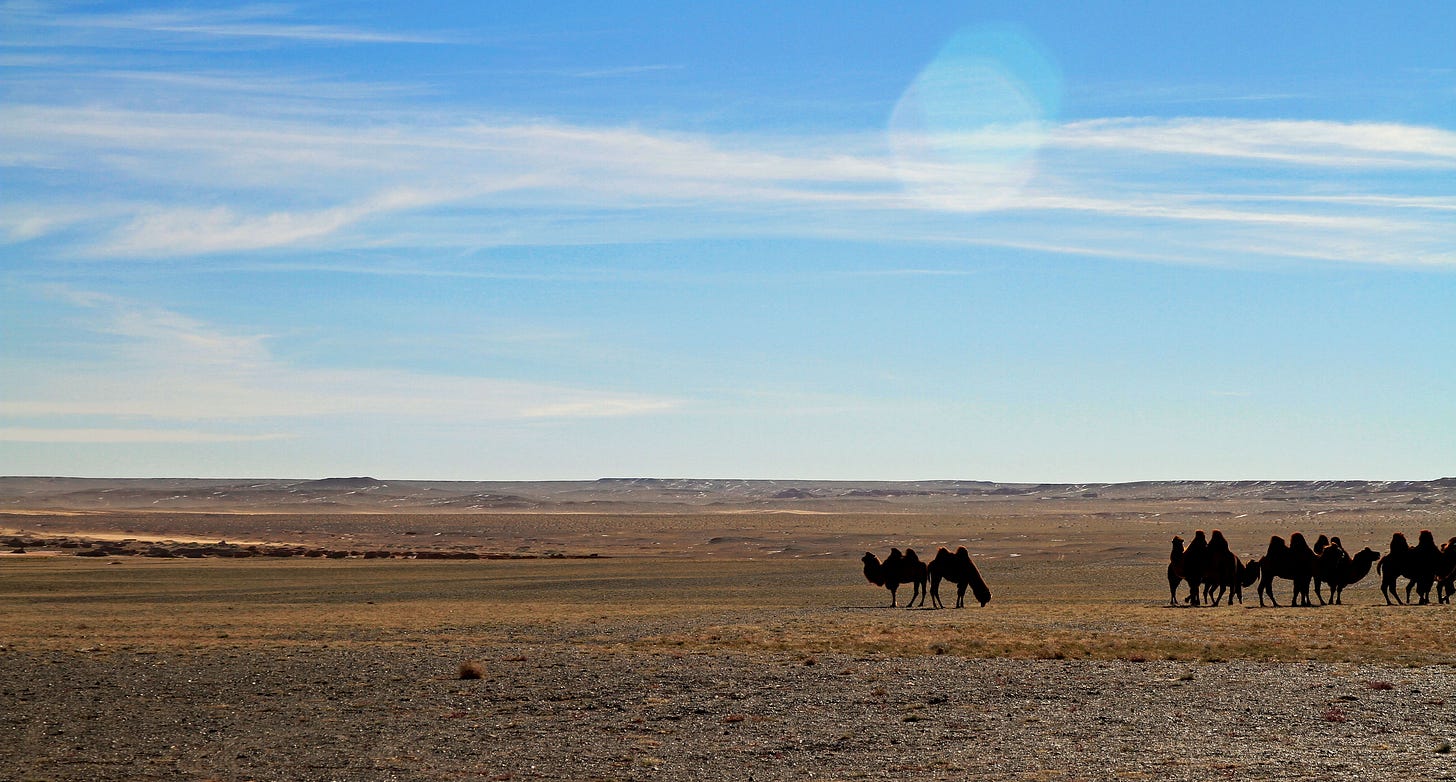


Oh God we have a massive display cabinet full of what we call “travel tat”; the game is to find the least tasteful souvenir to bring home. There’s a green velour Cristo Redentor, a tank made of spent bullets from Sarajevo, a miniature bunker from Albania, a tile of Ataturk from Cappadocia, etc. I could set up one of those eccentric little museums you sometimes find, there’s so much of it.